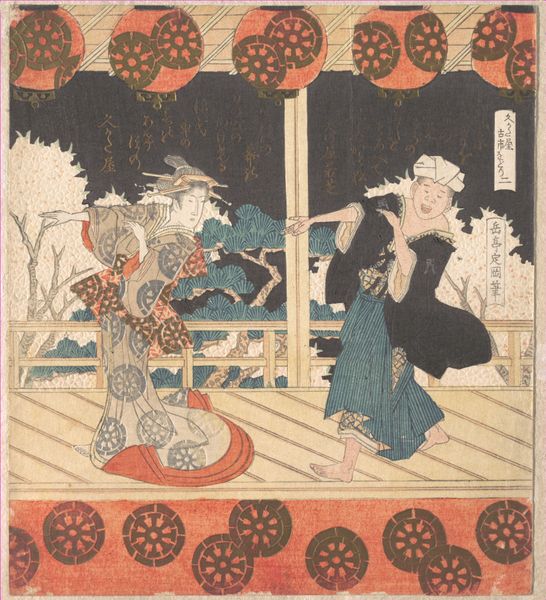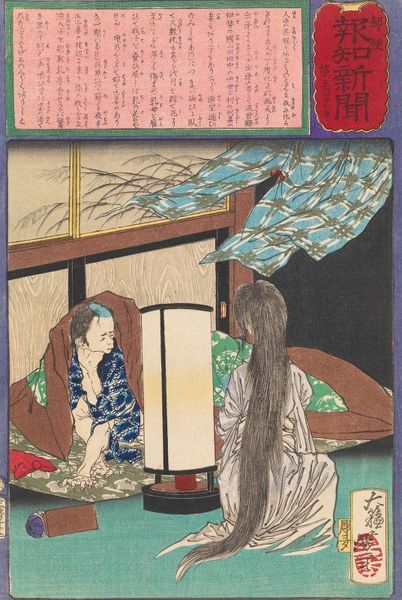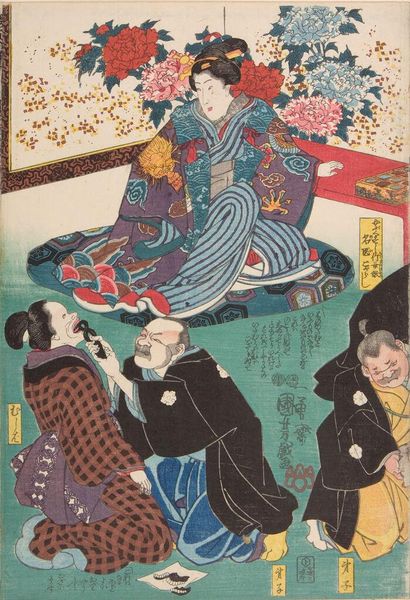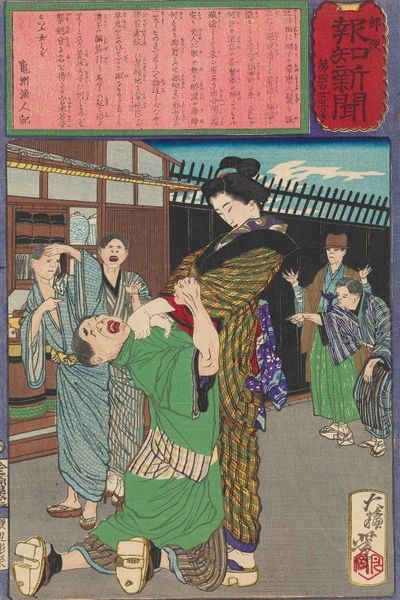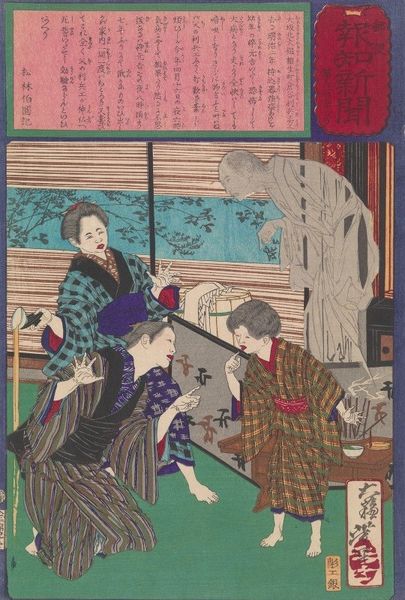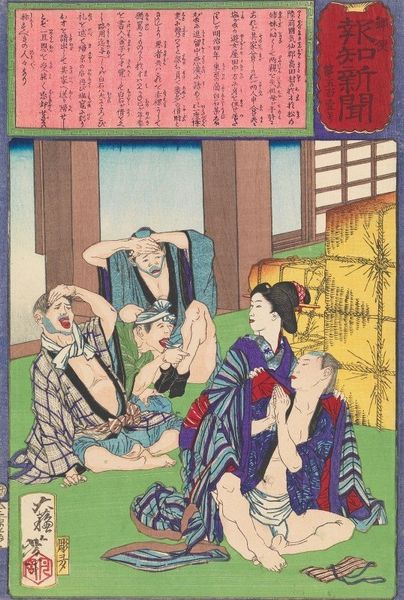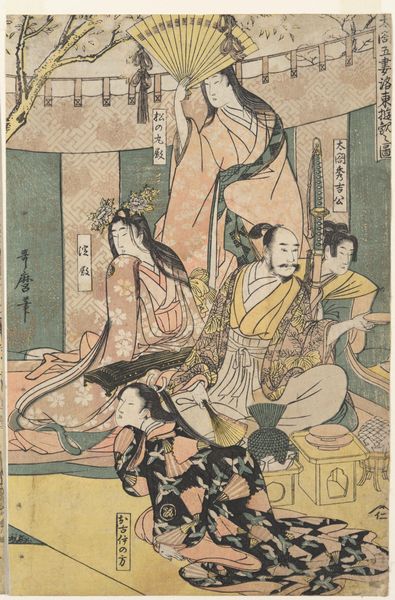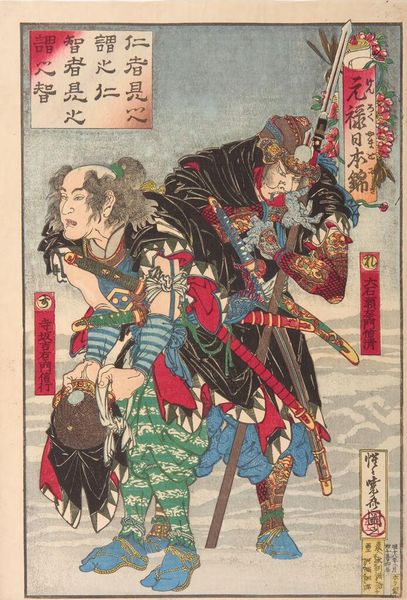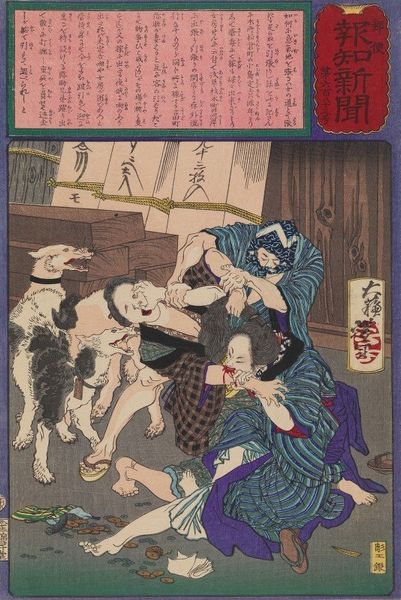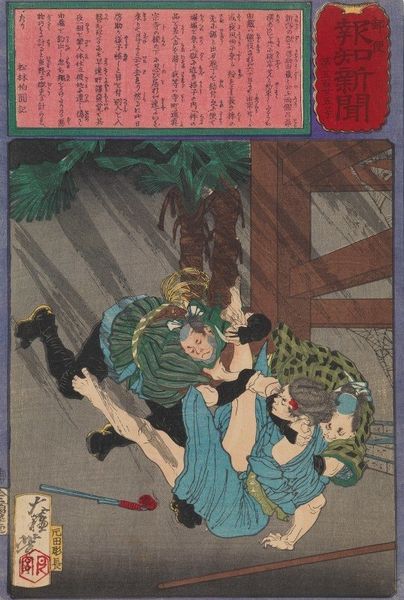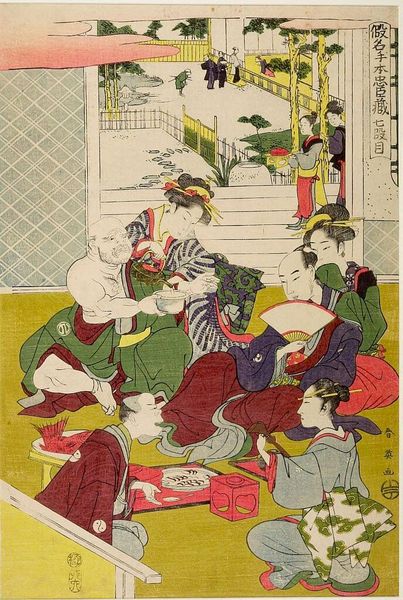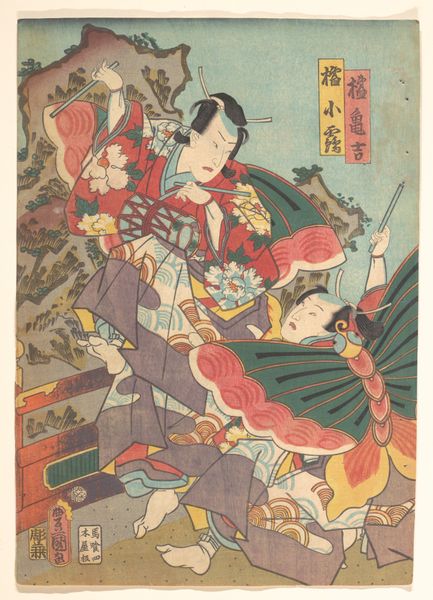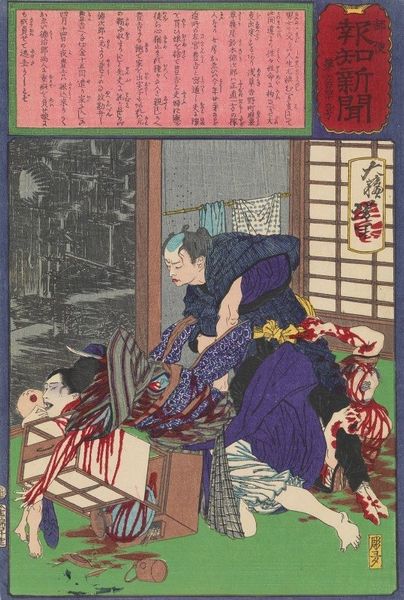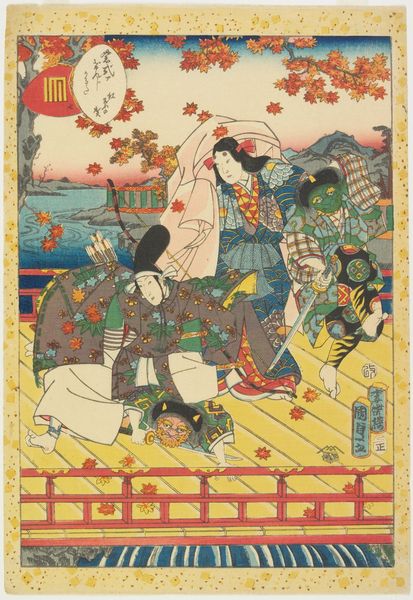
Copyright: Public Domain: Artvee
Curator: This woodblock print by Tsukioka Yoshitoshi, created in 1875, titled "Wife of Sangorō Scalds Her Husband’s Face with Boiling Water," immediately strikes me as chaotic and violent. Editor: Indeed, the composition is striking. There's a palpable sense of aggression emanating from the piece. I am interested in how Yoshitoshi uses a dramatic, real-life event in a highly mediated format to capture the complexities of marital strife in Meiji-era Japan. It makes me question the position of women at the time. Curator: The ukiyo-e style adds another layer to that reading. How does the artwork, appearing originally as part of a new series supplement in the Tokyo Nichi Nichi Shimbun (Tokyo Daily Newspaper), use art to shape public perceptions? Were such depictions of violence uncommon, or were they used to capture, and perhaps even titillate, the audience? Editor: It's significant to unpack this historical moment; the shift from feudalism to modernization profoundly impacted societal structures and gender roles. While the artwork is ostensibly a lurid crime report, could we read it as symptomatic of the deep anxieties accompanying a rapidly changing society and its norms, including patriarchy itself? Curator: I’m curious if this print challenges or reinforces existing power structures. While the woman is clearly violent, does the artwork critique the circumstances that led to her actions? The husband's flailing pose and visible burns invoke a particular, perhaps discomforting, empathy. Where does this place the woman's rage within larger narratives of gendered violence? Editor: And this brings to question art's responsibility, doesn’t it? We are constantly navigating these turbulent shifts, interpreting history while grappling with modern theoretical tools, hopefully to get closer to an understanding of how visual language reflects society and shapes us in turn. Curator: Indeed, the layers of context inherent in visual culture demand critical attention, offering invaluable entry-points into broader, often messy, dialogues. I feel much more contemplative about this piece.
